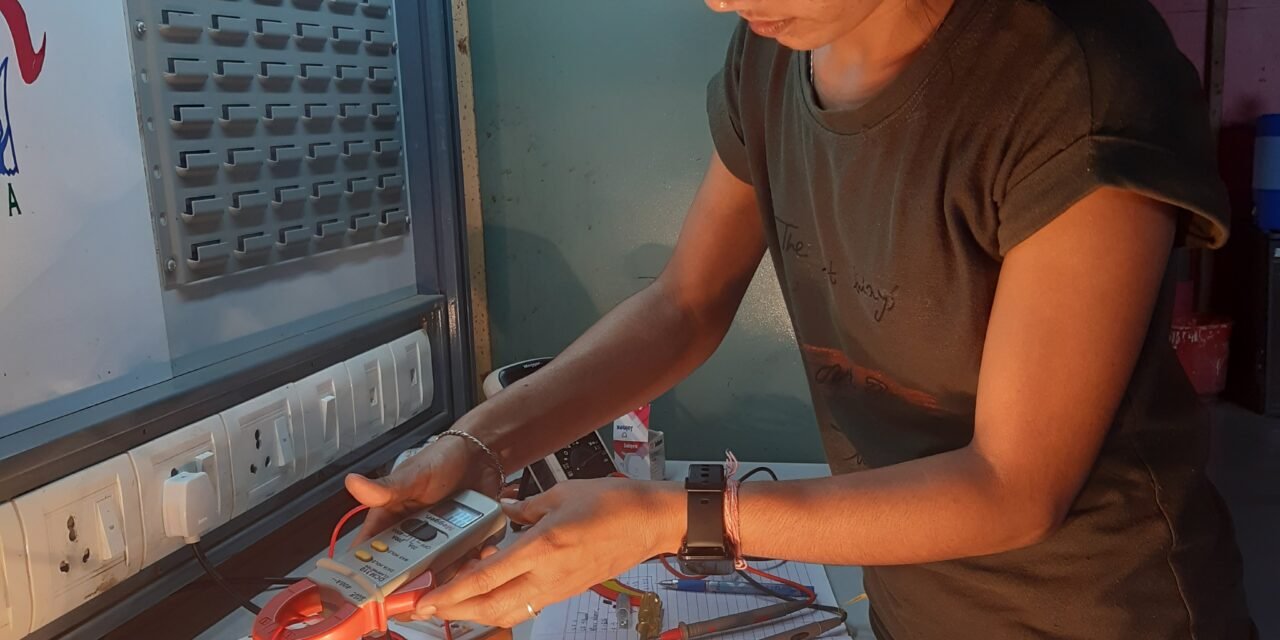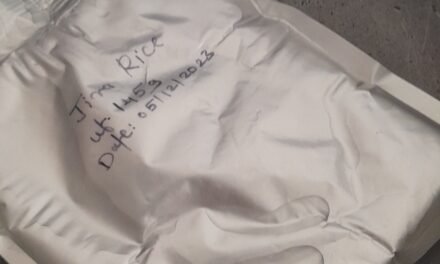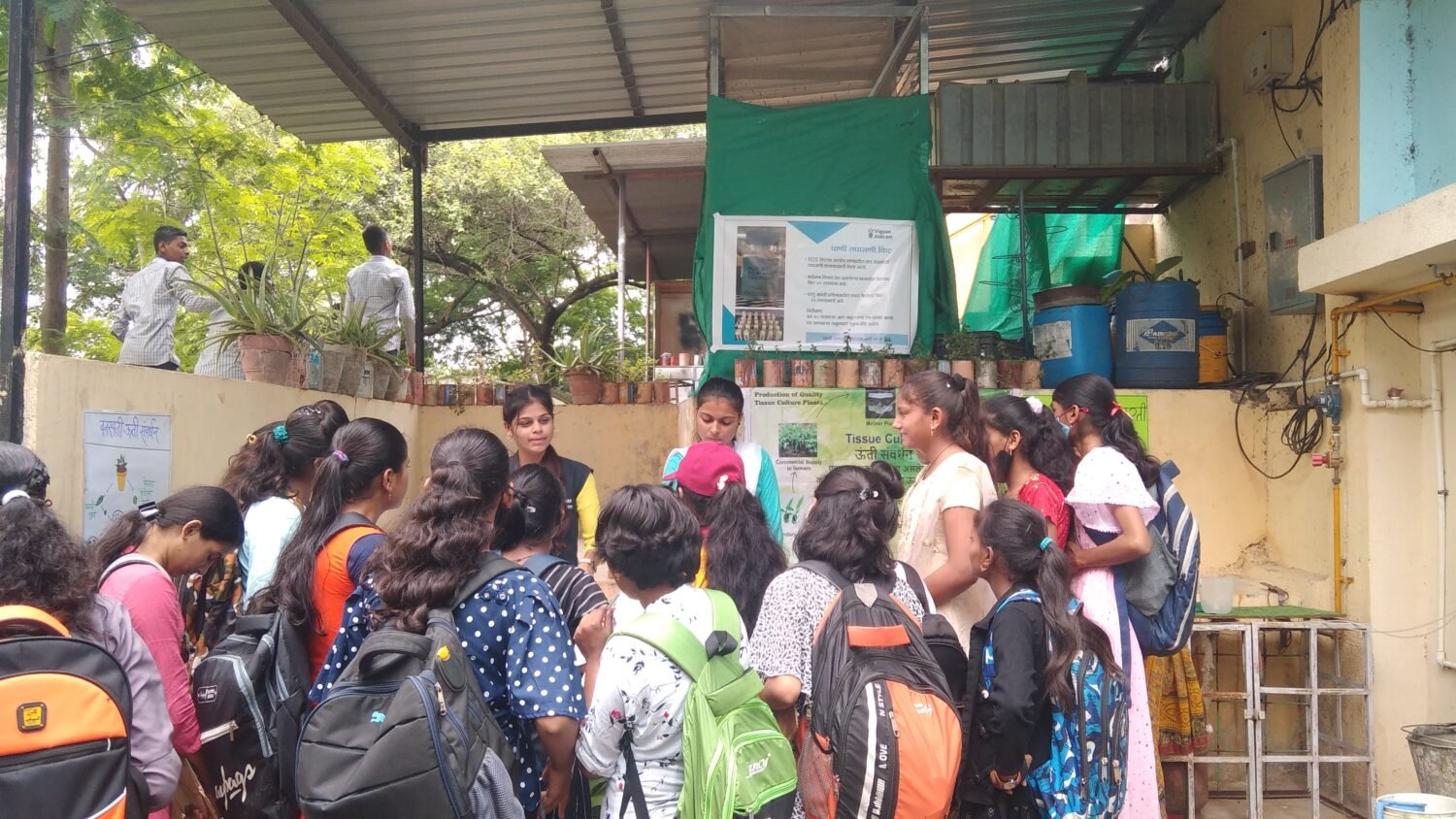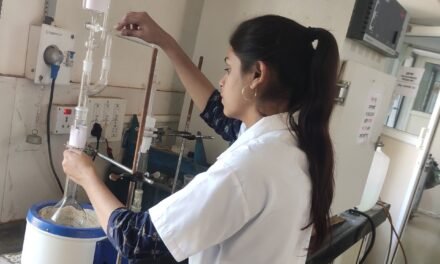15 September2022 to 30 September 2022
Weather – Temperatures
Practical – 1
Today, in the class, information was given about rain measurement and weather temperature. You can prepare data by keeping records every year and can also display data for 1 year or more years by drawing diagrams. This year the rain has decreased or more can be easily detected.
After the lecture, we went to measure the rain and temperature. Measured the rainfall and saw the temperature of the weather. Measured weather temperature and rainfall and added it to the daily data record sheet.

Weather – Temperatures

Electronic tools
Information about electronic components
To work on an electronic project, we need a variety of tools / equipment and the work of all the tools is different, all the tools / equipment used in electronic work were told. And told how we should use the tool. When we work electrically, we were also told about how we should take precautions.

- Screw driver
- line tester
- wire cutter
- soldering iron
- soldering paste
- soldering wire
- hammer
- Drill machine
- Tape
Electronic symbol
Before working on the electronic project, it is necessary to create a diagram of the circuit so that we can explain to other people about our project. We need electronic symbol for this diagram.

Cable
Information about the cable is given, how many types of cables are there. And it was told that cable is such a medium that works to transmit electricity to another. The cable is made of a metal which can be aluminum or copper as the two types of metal are most commonly used. There is a layer of insulating insulating material over the cable. that covers the metal.

Conductor: – This is the main part of the cable. The conductor is used to carry the current from one place to another. And only in the conductor is mainly found of copper and aluminum metal. And it can be single core, double core, multi core.
Insulation: – An insulation layer is applied on the cable so that if someone touches the cable, it does not get electrocuted and to protect it from the effects of the environment, insulation is also applied on the wire. The insulation of any cable should be of very good quality and it should be resistant to moisture and sunlight.
Safety cover: – There are only some on which another layer is applied after the insulation so that the leakage current can not come out from it and in most of the power cables we get to see this extra layer. Those that are used only for three faces, most of them have a protective cover.
Types of cable
1. On the basis of uses
- Wiring cable
- Power cable
2. On the basis of conduct material
- Single Core Cable
- Double Core Cable
- Triple Core Cable
- Double Core Cable With Earth Connection Wire
3. On the basis of insulating material
- Poly Vinyl Chloride Cable (PVC):-
PVC is used as an insulating material in this type of cable. It is used in house wiring. This type of insulation cable is more prevalent nowadays. It has both types of cables such as copper driver and aluminum driver available.
- Valkenized India Rubber Cable (VIR):-
Valchenized rubber is used as an insulation in this type of cable. This cable is designed in a range of 250 to 440 volts and 650 to 1100 volts. This cable is now used very rarely. PVC cable is used in its place.
Practical 2
After the cable and wire lecture, did the practical to put pins on the cable. In which we put a pin on the wire of the earthing machine in the workshop. The pin was of 16 amps.

Meter
Multimeter
Today in class we were given information about multimeter and told that multitester or multimeter is a device which can be used to collect data about electronic circuits. A basic multitester measures resistance, current, voltage and continuity. Whereas more advanced versions are able to provide additional data. The multitester device is powered by a battery. It consists of two test screens connected to a central pack. Which can be digital or analog. This device consists of several buttons or switches. Used to determine the type of measurement.
Clamp Meter
We also told about claim meter that we use claim meter to check ampere, voltage, continuity, etc. It looks like a multimeter, the only difference is that a clamp is attached to it. It is named Clamp Meter because of the clamp meter being installed in it. And the new multimeter comes with a claim meter

Type of meter
- Multimeter
- Clamp Meter
- Volt meter
- Ammeter / AmpereMeter
- Ohmmeter
- Energy Meter
Practical – 3

Solar Penal & connection
We were told about solar lights. The material required for solar was told like – multi meter, solar system energy diagram, solar panel, battery, charge controller, claim meter etc. At what degree does the solar panel take place and tell how to get power and voltage (P = V * I). There are two types of system in solar, on grid and off grid and after that the methods of cleaning the solar panel were told like cleaning with pipe, cleaning with robot etc. And then we went to check the solar system installed for the poly house. Cleaned the solar panels and checked the meters there. Checked the ampere in all the wires with a claim meter. And checked the off grid and on grid systems of the solar system.
Practical – 4

Earthing
- In today’s class, information was given about earthing, what are the types of earthing and why earthing is necessary and how earthing is done, all these were told.
Earthing means that the neutral point of the supply system and various types of equipment used in the electrical system like refrigerator light fan charger distribution board etc are connected to the ground through copper wire so that in case of any kind of fault be in Directly pass the leakage current arising into the earth and avoid any kind of danger. It is a kind of production system which always protect us. and the practical of plate earthing was taken.
- plate earthing
- Pipe earthing
plate earthing
Practical- 5
It has a metal plate for earthing. This plate is of two types. We have just used copper plate for earthing which is mostly used. From this plate 8 SWG size copper wire is used as earth wire. This earth wire is tightened with the help of nut bolt in the plate below the ground. After that this wire is brought out with the help of pipe.
The earth plate is placed about 1.5 meters below the ground. In this pit, the soil plate is first covered with a layer of salt and charcoal 15-15 cm thick.
We keep adding water from time to time to maintain the moisture in the pit inside it. For this we bring the pipe from the plate to the upper surface of the ground. Make a funnel on the top surface and lay a net in it and by this arrangement we keep pouring water into this earthing from time to time.

After plate earthing practical, we went to check the earthing of meditation hole. There we saw how the earthing was done and checked the power of the earthing with multimeter, claim meter and test lamp.

Miniature Circuit Breaker(MCB)
MCB is a circuit breaker, now the function of the circuit breaker is that whenever there is any electrical fault, the circuit breaker automatically trips and stops the supply. Trip means the automatic supply shutdown when there is a problem i.e. fault is called trip.

MCB gives us protection in case of two faults.
- Overload Fault
- Short Circuit Fault
MCB Current Rating
1A, 2A, 3A, 4A, 6A, 10A, 13A, 16A, 20A, 25A, 32A, 40A, 50A, 63A
Types of MCB Based on Pole
- 1 Pole
- 2 Pole
- 3 Pole
- 4 Pol
Practical- 6
MCB :- Today information was given about MCB board. Why MCB board is installed and what is its function, it was told. If there is any problem related to light, first of all we should turn off the MCB switch. MCB board should always be installed for input and output power while making connection. After that we changed MCB of girl hostel which got burnt due to short circuit. We installed a new MCB of 40 voltage. Changed the connectors in which there was a short circuit.

Battery
Battery :- A battery is an energy storage device that is made up of many cells. There are electro chemical reactions inside the battery cells which convert chemical energy into electrical energy. These electro chemical reactions are caused by the ions present in the chemical. There are two types of plates present in each cell, cathode and anode, which help in the flow of electrons. In this way, we can extract energy from a cell. In this way a battery is made by connecting one cell to another cell in parallel or series. The chemicals present in the cell do not generate energy until the circuit of its positive (cathode) and negative (anode) terminals is completed.
The battery has two terminals – Positive Terminal (+) and Negative Terminal (-). In this we can extract energy from the battery by adding our load. The flow of electrons inside the cells is from negative to positive, but in curcuit the current is from positive to negative. In this way the Output Current and Voltage Miles from the battery.
Two types of battery
- Primary Battery
- Secondary Battery,
Primary Battery:- The battery which is used once and thrown away (Use & Throw). It is also called non-rechargeable battery. For example – the cell of the clock.
Secondary Battery:- Battery which can be charged-discharged repeatedly. It is also called Rechargeable Battery. . For example –Inverter Battery, Car Battery, UPS Battery, Lithium Battery.
Fuse
Fuse :- Fuse is a component which is used to protect the equipment or circuit from any kind of damage. In case of excessive current in the equipment or in case of any kind of fault, the fuse shuts off its supply. So that losses can be avoided. Different types of fuses are used in all devices. Fuses are also installed on the basis of the current going to the equipment or on the basis of how much load that equipment takes, the fuse is installed in it.
A fuse has a small metal wire. When overload condition occurs in the circuit, the value of current in the circuit increases greatly and when this excessive current passes through a small thin wire, heat is generated in the fuse wire according to Joule’s law (I2Rt). And the fuse wire melts.
| Sr. No. | Metal | Melting Point (in Fahrenheit) |
| 1. | Copper | 2000 |
| 2. | Silver | 1830 |
| 3. | Aluminum | 1243 |
| 4. | Anti money | 833 |
| 5. | Zinc | 783 |
| 6. | lead | 625 |
| 7. | Tin | 464 |
Types of Fuse
- Cartridge
- Kit-Kat Or Rewirable Fuse
Cartridge Fuse:- Cartridge fuse is completely closed. And due to closure, they are not affected by the environment, so their fusing current remains constant. The key cap is attached and the fuse wire is attached to the cap on both these sides. Powder is filled inside this fuse, which prevents the spark from spreading when the fuse is running. An index circle is made above this fuse, which is white at first. But if the fuse blows, then its color becomes black, which is known by looking at it. That the fuse has burnt, these fuses are very expensive and they are used mostly.

Kit-Kat Or Rewirable Fuse:- Cricket shoes have two parts, one of which is fixed by a part called a fuse base and the other part is a carrier on which a fixed current fuse is installed. If for some reason the fuse burns out, the fuse carrier can be removed from the fuse base and re-wired. This fuse is made of ceramic and is widely used in domestic wiring. 5 amp/s in domestic wiring. Shoes of 250v and 15amp/250v are used and fuses up to 300amp/440v are used in large factories.

Ohms Law
According to this law, if the physical conditions (eg: – temperature, pressure etc.) of a conductor are kept constant, then the electric current flowing in it is proportional to the potential difference across the ends of the conductor.
om ka niyam ka formula
If the potential across the ends of the conductor is V and the current flowing in the conductor is I, then :-
V ∝ I
That is, when the value of voltage increases, the value of current also increases and when the value of voltage is used, the value of current also decreases.
V=RI
In om ka niyam R is a constant constant called resistance of the conductor.
R=V/I
Ohm’s law to find the value of voltage
V=I×R
Ohm’s law to find the value of electric current I=V/R
Ohm’s law to find the value of resistance R=V/I
Using Ohm’s law, we can find the value of potential difference, current and resistance.

Voltage (Potential): The difference in potential between two points in a conductor is called potential difference, it is a type of force which pushes the electron, which causes the flow of electric current.
Electric current or current: – When electrons start moving, we call it electric current.
resistance:- The obstacle that arises in the flow of electric current is called resistance. The formula for resistance is R = V/I.

Series & Parallel Connection Method
Series Connection Method – Two or more resistances are to be connected in such a way that the last end of the first resistance, the first end of the second resistance and its second end, the first end of the third resistance and so on are connected to the other resistances. becomes a path of flow.

Parallel Connection :- In parallel circuits, the voltage across each component is the same, and the total current is the sum of the currents flowing through each component. In a series circuit, each device must act in order to complete the circuit. If one bulb lights up in a series circuit, the whole circuit breaks down.

Practical- 7
Information about series connection and parallel connection is given. How is the wiring done in the series and parallel connection and where the series connection is done and where the parallel connection is done. In series connection voltage divides and current remains same everywhere but in parallel connection voltage remains same and current gets divided
parallel connection

Series connection

Parallel and Series Connection Calculations

Practical- 8
Electrical board wiring
Gave information about electrical board wiring.
How to give positive and negative connection. Negative connection is not given in the switch. Wire size should be taken according to volt and current. It would have been necessary to put a fuse in the board and told about the earthing wire. After this I made electrical board & extension board

Extension board

Battery Hydrometer
Battery Hydrometer:- It is a device that measures the gravity of the battery. If we talk about its texture, then there is a rubber circular hair on it and there is a rubber tube in the front part which is immersed in battery water.
The tube is put in the battery water, write some scales in this tube. By this scale, it is known whether the battery water is correct or not, if the scale map works from 1100 to 1300, then the battery water is not correct.






